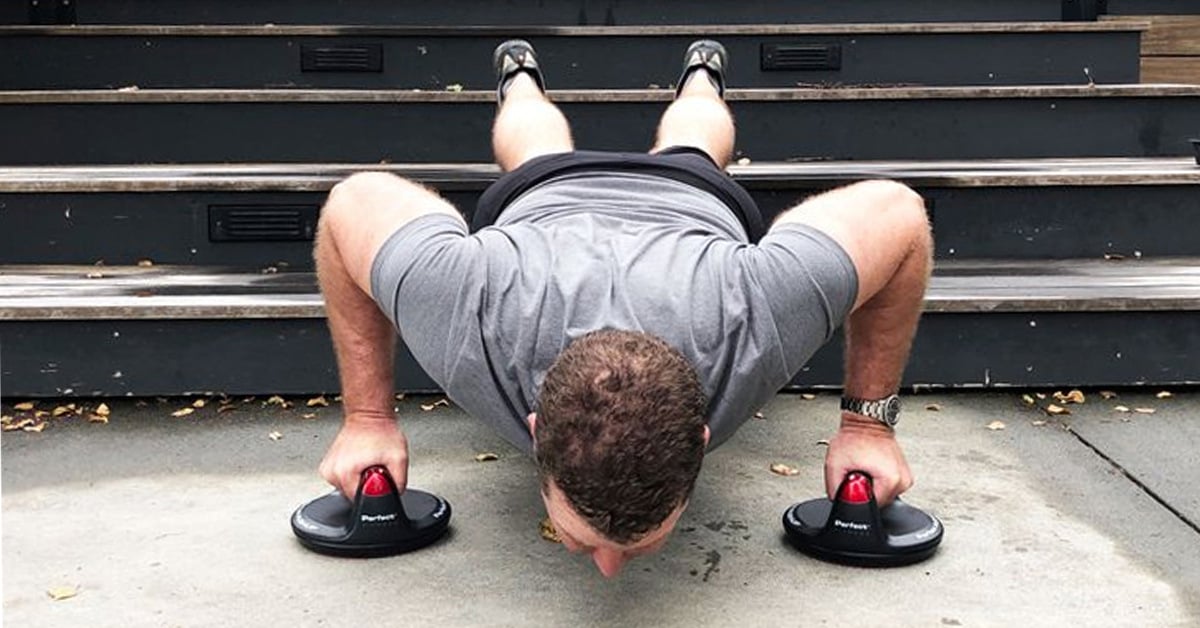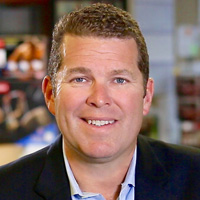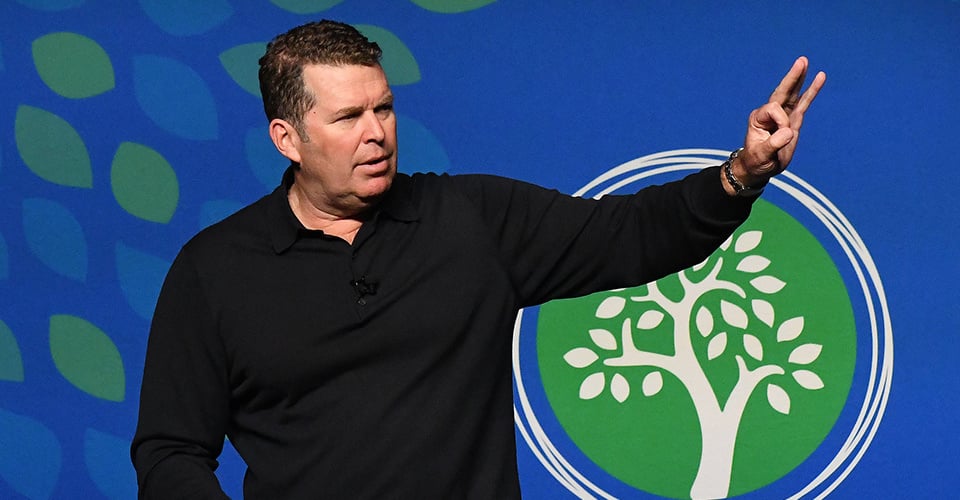 The Perfect Pushup is a fitness tool that has transformed the way people perform pushups, making them more effective and reducing strain on the wrists and shoulders.
The Perfect Pushup is a fitness tool that has transformed the way people perform pushups, making them more effective and reducing strain on the wrists and shoulders.
The man behind this innovation is Alden Mills, a former U.S. Navy SEAL platoon commander, who turned his passion for fitness and leadership into a successful business venture.
His journey from military training to entrepreneurship is an inspiring tale of determination, creativity, and resilience.
The Man Behind the Invention: Alden Mills
Alden Mills’ story begins long before the Perfect Pushup was ever conceived.
 Born with asthma, Alden was advised as a child to avoid strenuous physical activity. However, rather than allowing this limitation to define him, Mills became determined to overcome it.
Born with asthma, Alden was advised as a child to avoid strenuous physical activity. However, rather than allowing this limitation to define him, Mills became determined to overcome it.
He focused on building his strength and endurance, eventually becoming a standout athlete. His drive led him to the U.S. Naval Academy, where he later trained to become a Navy SEAL, one of the most elite military forces in the world.
During his time as a SEAL, Mills realized that proper form was critical to maximizing pushup effectiveness while minimizing injuries. Traditional pushups often put stress on the wrists and did not fully engage all the muscles in the arms, chest, shoulders, and core.
This sparked an idea - what if there was a better way to perform pushups?
The Birth of the Perfect Pushup
After leaving the Navy, Alden Mills transitioned into the business world, where he aimed to bring his fitness knowledge to a broader audience. He partnered with a team of fitness experts and engineers to develop a pushup device that would mimic the natural motion of the arms and shoulders, similar to how Navy SEALs are trained to perform pushups.
The result was the Perfect Pushup, a set of rotating pushup handles designed to improve form and enhance muscle activation. The device allows the wrists and arms to move naturally as one lowers and lifts the body, similar to how a boxer throws a punch. This innovation reduces strain on the joints and engages more muscles, leading to better results in strength and endurance training.
"After my company as named one of Inc.'s fastest-growing companies in the country, reporters asked, "How did you invent the Perfect Pushup?" My response: "With twenty-five other people." - Alden Mills, Excerpt from Unstoppable Teams Book


The Science Behind the Perfect Pushup
How to do a Correct Push-up? - Begin in a high plank position with your hands placed slightly wider than shoulder-width apart, feet together or slightly apart, and your body forming a straight line from head to heels. Keep your core tight, glutes engaged, and avoid sagging or arching your back. As you inhale, bend your elbows and lower your chest toward the ground, keeping your elbows at about a 45-degree angle from your torso. Lower until your chest nearly touches the floor, then exhale and push through your palms to straighten your arms and return to the starting position. Maintain control and steady breathing throughout each repetition.
The Perfect Pushup is designed based on biomechanics principles that optimize upper body workouts.
Here are some key details about the Perfect Push Up product:
- Rotating Handles: The handles turn as you push up, engaging more muscles in the arms, chest, and shoulders compared to a traditional pushup.
- Reduced Joint Strain: By allowing natural wrist rotation, the Perfect Pushup minimizes stress on the wrists and shoulders, reducing the risk of injury.
- Increased Muscle Activation: Studies have shown that rotating pushup handles activate more muscle fibers, leading to greater strength gains over time.
- Portable & Easy to Use: Unlike bulky gym equipment, the Perfect Pushup is lightweight, portable, and can be used anywhere.
Perfect Pushup Instructional Video with Alden Mills
Watch this Perfect Pushup Get Ripped Workout Instructional DVD, originally published in 2007, to learn the unique benefits of the Perfect Pushup program in this quick start overview by Perfect Pushup inventor and former Navy SEAL, Alden Mills. You can also learn more in this blog about Alden Mills as a Navy SEAL Motivational Speaker for High Performance Training.
Success and Popularity
When the Perfect Pushup hit the market in the mid-2000s, it quickly gained popularity. The product became a top-selling fitness item thanks to its effectiveness and strong marketing campaign. Mills and his company, Perfect Fitness, leveraged television commercials, infomercials, and retail partnerships to promote the product.
It wasn’t long before fitness enthusiasts, professional athletes, military personnel, and everyday individuals started incorporating the Perfect Pushup into their workout routines. The success of the product led to an expansion of the Perfect Fitness brand, which introduced other fitness equipment, such as the Perfect Pullup, Perfect Ab Carver, and Perfect Multi-Gym.





The Legacy of the Perfect Pushup
Alden Mills’ journey from a kid with asthma to a Navy SEAL, entrepreneur, and motivational speaker is a testament to perseverance and innovation. His creation of the Perfect Pushup revolutionized how people approach bodyweight training and paved the way for a new generation of fitness equipment.
Today, the Perfect Pushup remains a staple in home fitness, proving that a simple yet well-designed tool can make a significant impact. Whether you're a beginner looking to improve your strength or a seasoned athlete aiming for better pushup performance, this device continues to be a game-changer.
The product line has evolved and the Perfect Fitness Perfect Pushup Elite is available with features including; anti-slip rotating handles, 8" base, ergonomic grip to distribute weight evenly, along with other improvements to product design.

Who Invented the Original Push Ups?
While no one person can be definitively credited with inventing push-ups, the movement has deep roots in history and was shaped by various cultures and fitness pioneers. Here are a few who played a role in the evolution of push ups:
-
Ancient Greek soldiers (circa 600–300 BCE) – These warriors used callisthenic training to prepare for battle, incorporating bodyweight movements that closely resembled modern push-ups to build strength and endurance.
-
Indian wrestlers (Pehlwani tradition, dating back to at least the 10th century CE) – Practiced dands, a flowing push-up variation that remains a staple in traditional Indian strength training and martial arts.
-
Jack LaLanne (1914–2011) – Known as the "Godfather of Fitness," LaLanne brought bodyweight training, including push-ups, to the American public through his television show, which aired from 1951 to 1985.
-
Jerick Revilla (date unknown) – Occasionally mentioned online as the inventor of the push-up, though there is no credible evidence or historical record to support this claim - it appears to be a myth or internet rumor.
Push-ups likely evolved over time across cultures, shaped by necessity, discipline, and innovation - from ancient warriors and wrestlers to modern fitness icons like Jack LaLanne and Alden Mills.
Timeline of the Perfect Pushup Creation
1990s – The SEAL Training Years
- Alden Mills trains as a Navy SEAL, where he experiences firsthand how traditional pushups put unnecessary strain on the wrists and shoulders.
- He begins developing the idea of a rotating pushup device to improve form and reduce injury risk.
Early 2000s – Transition to Business
- Mills leaves the military and begins researching biomechanics and exercise science to refine his idea.
- He partners with engineers and fitness experts to develop prototypes of the Perfect Pushup.
2004 – The First Prototype
- After several trials and modifications, the first working prototype of the Perfect Pushup is completed.
- Mills tests the device extensively, refining its rotating handle design to mimic the body’s natural motion.
2006 – Official Launch of the Perfect Pushup
- The Perfect Pushup is introduced to the market under Mills’ company, Perfect Fitness.
- The product is initially sold through direct-response TV commercials and online sales, gaining attention in the fitness community.
2007 – Explosive Growth
- The Perfect Pushup becomes one of the best-selling fitness products, thanks to infomercials and major retail partnerships.
- Sales skyrocket, reaching millions of units sold within the first year.
2008-2010 – Expansion & Product Line Growth
- Mills and Perfect Fitness expand their product line, introducing:
- Perfect Pullup (for upper body and core strength)
- Perfect Multi-Gym (a doorway pull-up bar)
- Perfect Ab Carver (for core workouts)
- The Perfect Pushup continues to be a top-selling home fitness tool, appearing in major retailers like Walmart, Target, and Amazon.
2011 – Perfect Fitness Acquired by Implus
- Seeing its massive success, Implus, a global fitness and wellness brand, acquires Perfect Fitness to scale its distribution and growth.
- Mills transitions into motivational speaking and leadership coaching, sharing his story and experiences with audiences worldwide.
2015-Present – Enduring Success & Legacy
- The Perfect Pushup remains a household name in fitness, with millions of units sold worldwide.
- It is regularly featured in fitness guides, online workout programs, and military training regimens.
- Alden Mills continues to inspire others through his books, such as "Be Unstoppable" and "Unstoppable Teams," and his work as a motivational speaker.
The Perfect Pushup has not only revolutionized the way people perform pushups but also inspired a new wave of functional fitness equipment that prioritizes natural movement, injury prevention, and maximum muscle engagement.
Thanks to Alden Mills’ vision and dedication, this fitness innovation has helped millions of people achieve their strength training goals. His story serves as a reminder that with determination, creativity, and the right mindset, anyone can turn a simple idea into something extraordinary.






